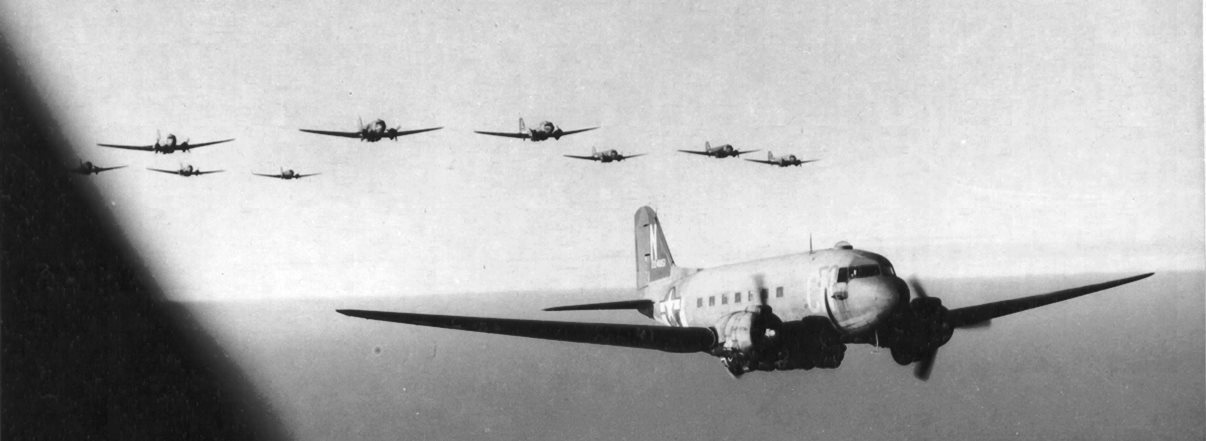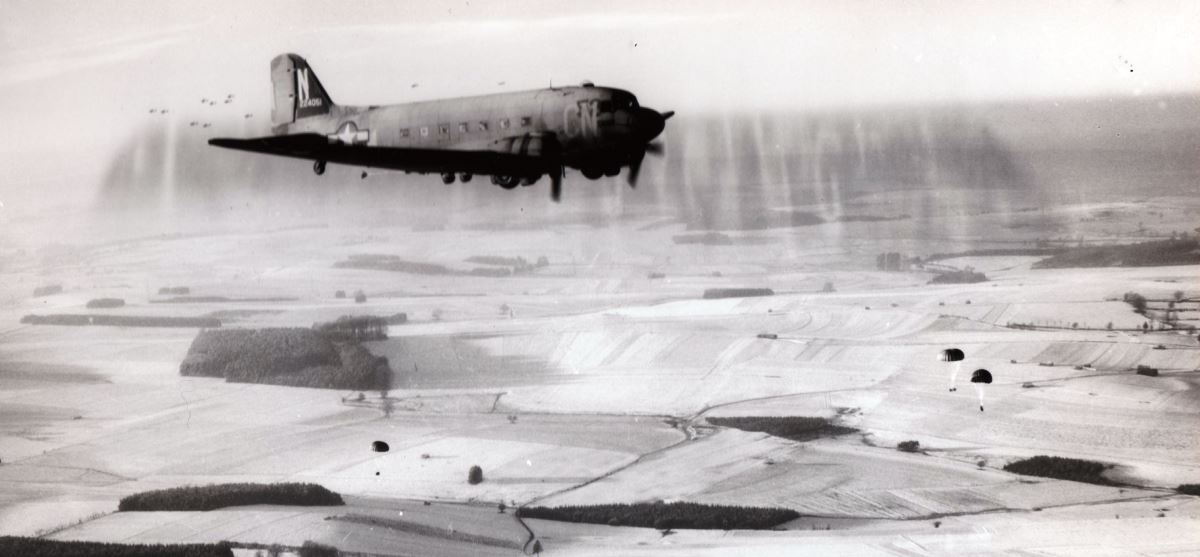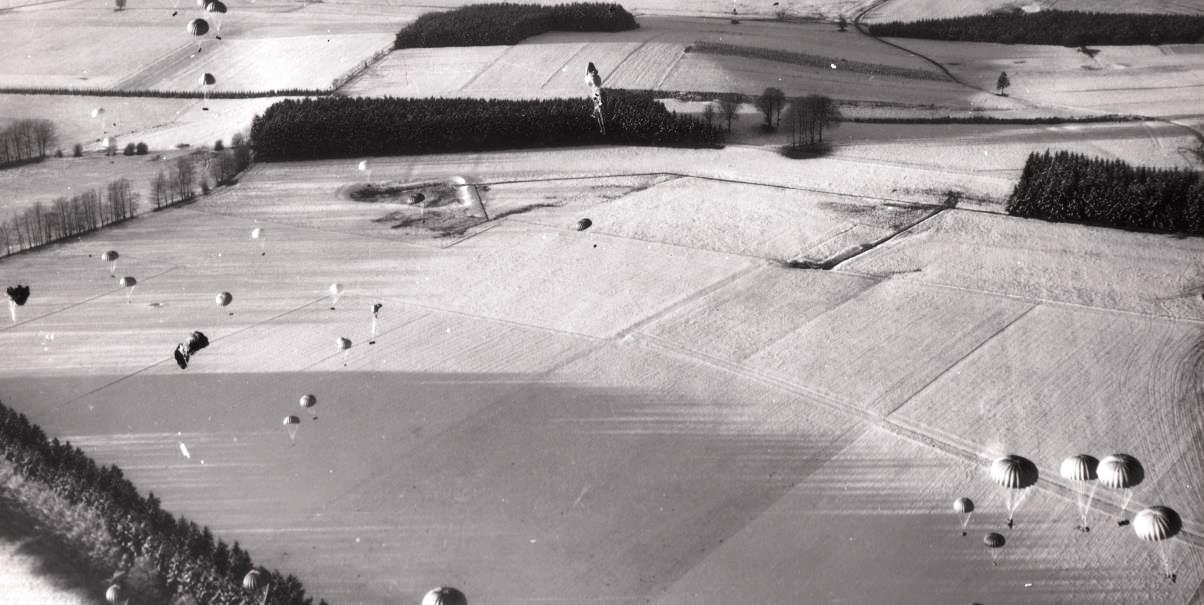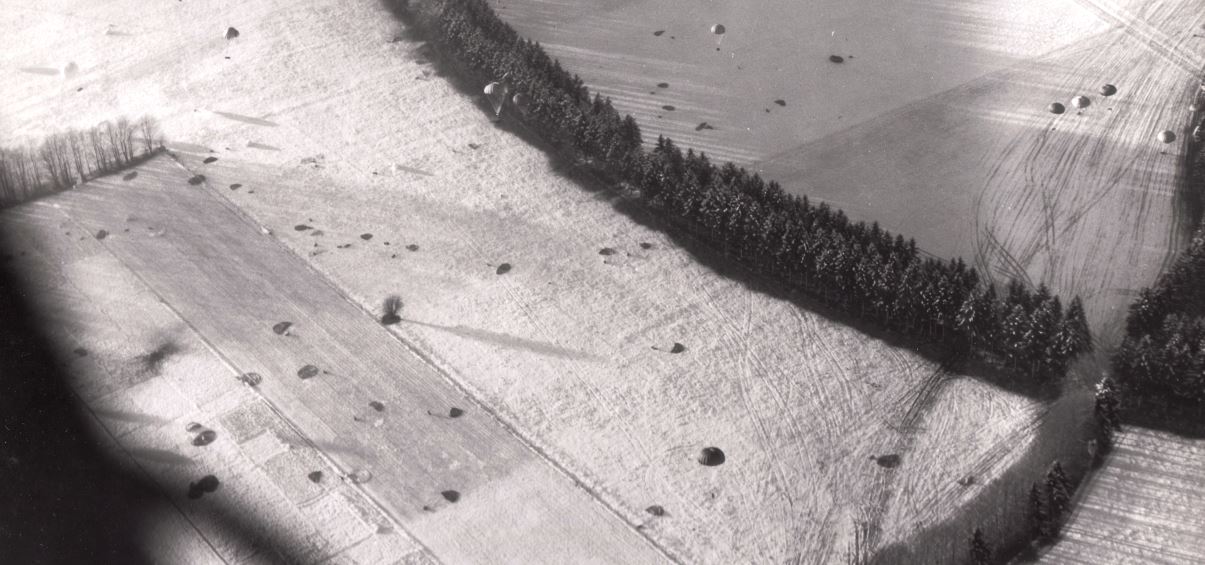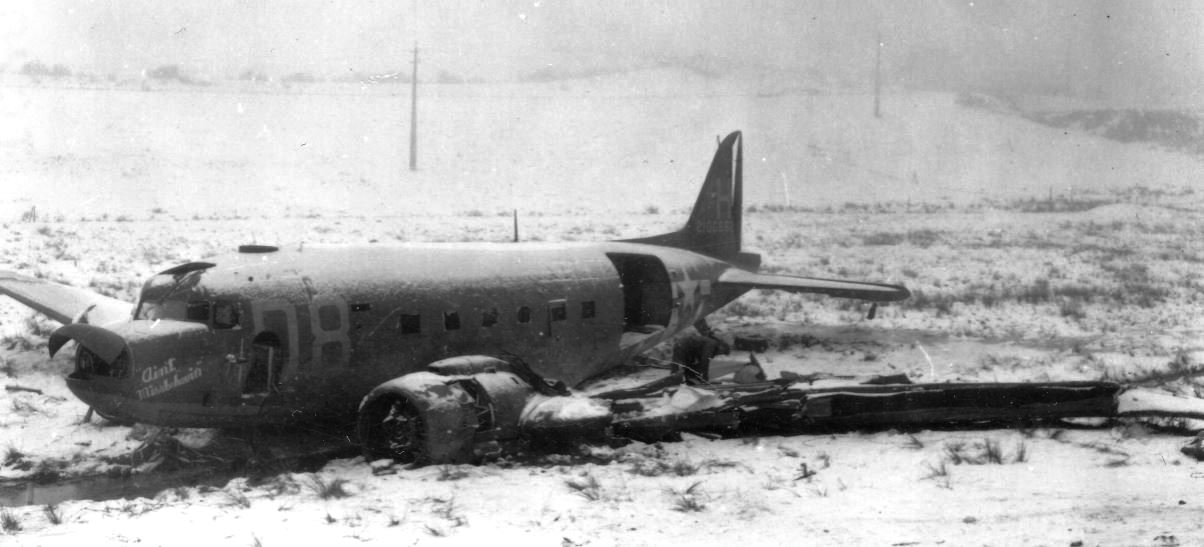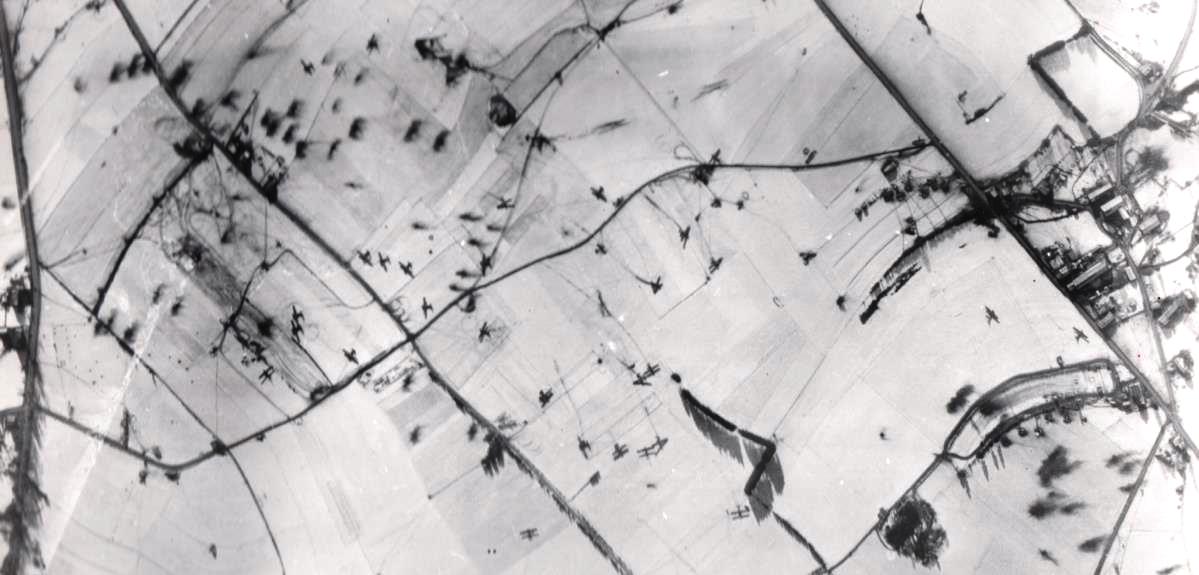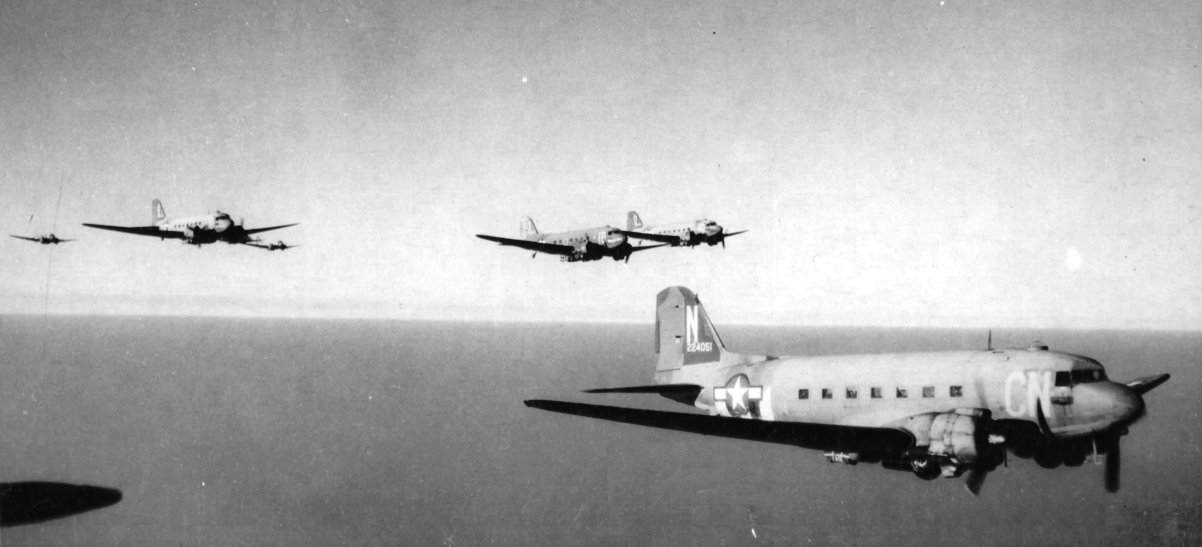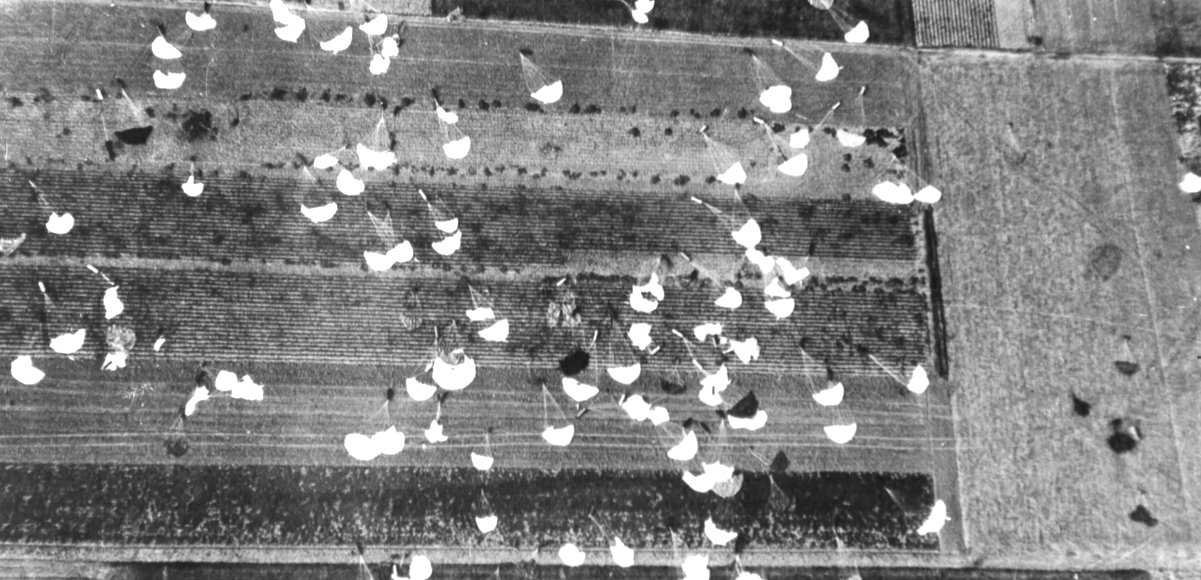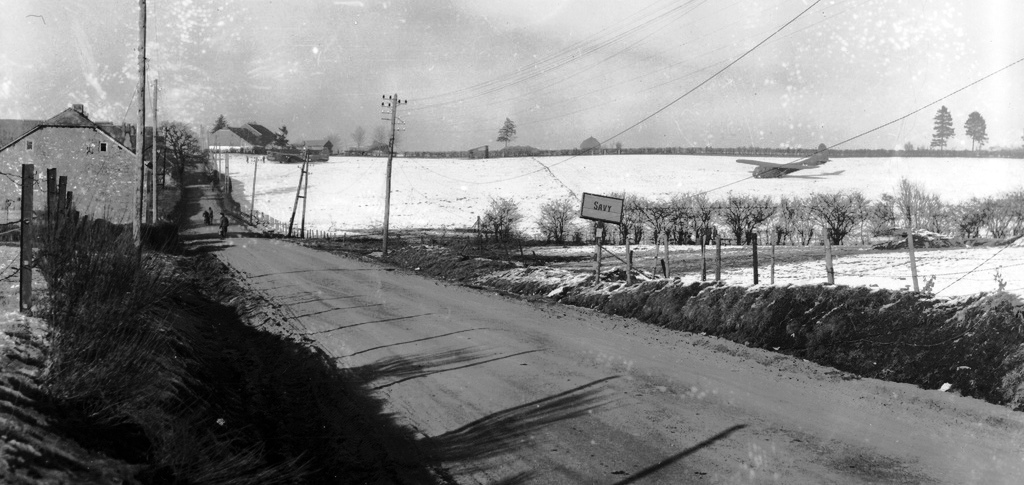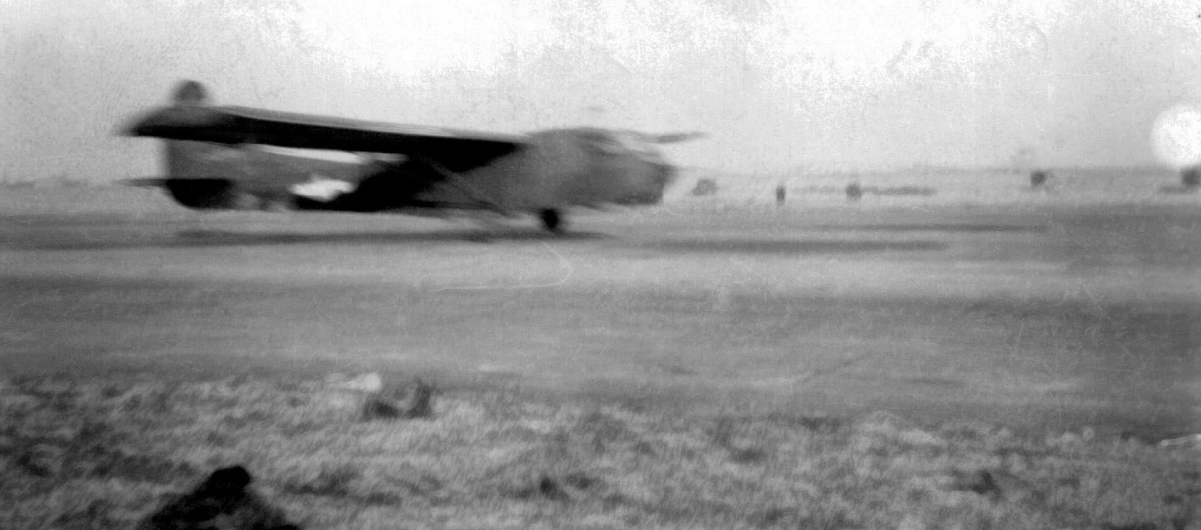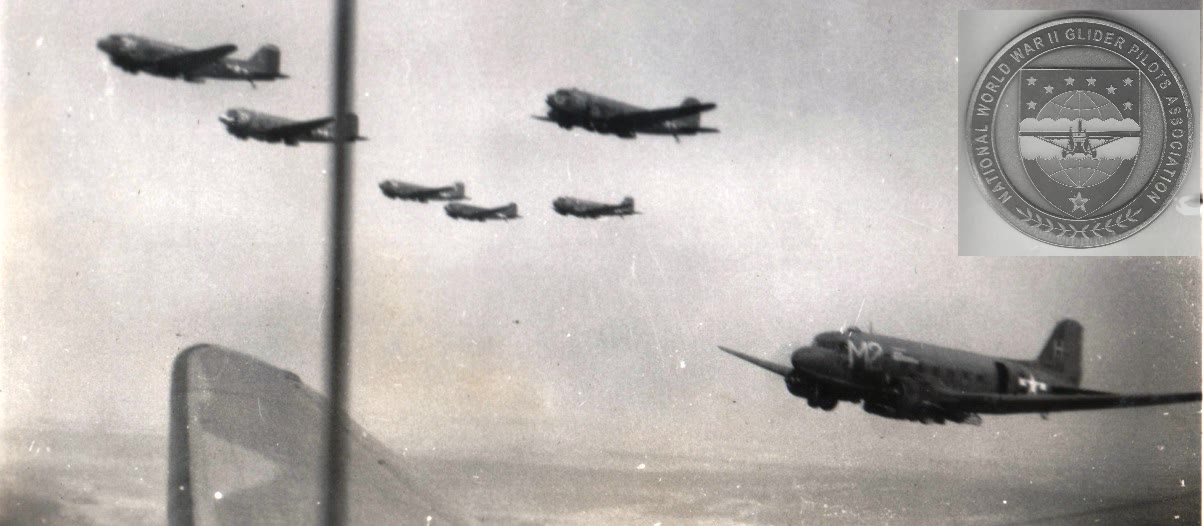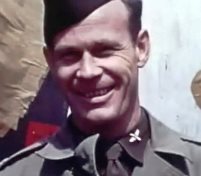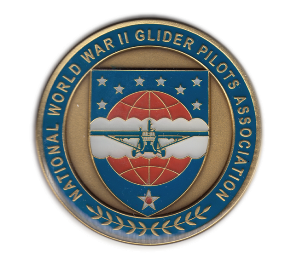National WWII Glider Pilots AssociationLegacy Organization of veterans National WWII Glider Pilots Association. Discover our History, Preserve our Legacy | ||
|
23 December 1944
Pathfinders set up the radar beacon for the C-47s in Bastogne at 0925. First- Resupply (441st TCG) Mission #1072 23 December.The resupply of Bastogne began when twenty-one C-47s from the 441st Troop Carrier Group, took off from Dreux, France at 0958 beginning the resupply of Bastogne. They flew in following the Bastogne Marche—Highway (N—4) at 900 ft. As it happened, a Panzer Division was also occupying that highway in their drive to Rochefort. The C-47s began receiving heavy small arms and flak fire, mostly from the Panzer Division. The 302nd Troop Carrier Squadron was leading the formation and the second ship, piloted by 1st Lt. Robert L. Anstey and co-piloted by 2nd Lt. Raymond G. Wiethorn, 302nd TCS] was the first aircraft destroyed. The crew of this plane bailed out and, except for the pilot, were captured by the Germans. The rest of the planes made the drop directly on the red smoke. (See 50th Wing report below.) There were fighters in the sky with the C-47s but they had orders to protect against a Luftwaffe that never showed up and did not strike the Panzer Division. It was reported by the 510th Fighter Squadron who escorted the twenty one C-47s, that the flak was moderate, accurate and light. Further reading from the report:
Lt. Col William H. Parkhill, Commander 441st Troop Carrier Group. Taken from a letter sent to George Koskimaki for his book, The Battered Bastards of Bastogne:
The 101st Airborne and the Battle of the Bulge 50th Wing Report:
Mission #1072
The 441st Troop Carrier Group was alerted to furnish 21 aircraft carrying door bundles and six parapacks each. The first ship took off at 0958 hours on 23 December. The IP was south of DINANT at VP980845 and the route ran north and then turned east to the DZ. The DZ was located 12 miles NW of the town of BASTOGNE. When the formation was about ten miles from the DZ the crew chief of on of the planes was rearranging his load and knocked one of the door bundles overboard. The aircraft following, believed himself over the DZ, salvoed his six parapacks. The door bundle on this ship was dropped at the DZ but the six parapacks on the first ship went down with the ship when it was hit by flak a few miles SW of the DZ. Some of the supplies were salvaged by the Airborne, from this ship. The remaining 19 sticks¹ and 20 door bundles were dropped on the DZ. Four individual parapacks aborted and were returned to base, making a total of 16 parapack and 1 bundle which failed to reach the DZ. The position of each stick of parapacks is indicated on the overlay in purple circles. (Weinzettel)An analysis of the mission shows that 87% of the individual parapacks and 95% of the door bundles reached the DZ. The total load reaching the DZ was 74,800 lbs (59,800 lbs mines and explosives; 14,200 lbs rations and 800 lbs medical supplies) while 83,200 lbs was dispatched. The percentage of the load reaching the DZ by weight was 90%. One aircraft was seen to crash, four suffered 1st and 2nd echelon damage and two suffered 3rd and 4th echelon damage. (Weinzettel)¹ The use of the word stick in this report refers to the individual parapacks under each ship. Reference: Weinzettel, R. E, Major, Analysis of Bastogne Resupply by Units of this Command. 50th Troop Carrier Wing, Office of the A-2, APO 133, U.S. army, 18 January 1945, Mission #1072 para “a”. National Archives, College Park, MD.Narrative report by the 302nd TCS regarding this resupply mission:
Second Resupply - Pathfinder group resupply.
Four were shot down, nine made emergency landings ‘on the far shore’. Of the 252 men flying the mission four men were seriously wounded, two slightly wounded, and sixteen were missing in action. Third Resupply - 53rd WingThis resupply was the largest and involved all the Groups of the 53rd Wing, all based in England;
434th TCG stationed at Aldermaston, 435th TCG stationed at
Welford Park, 436th TCG stationed at Membury, 437thTCG stationed at Ramsbury and the 438th TCG stationed at Greenham Common (On both the 23rd and 24th Group Commander, Col. John M. Donalson led the 438th Group.
Col. Donalson Commanded the lead plane on the largest echelon of paratrooper drops in the air assault on Normandy, “that’s all brother”)
Each Group flew at a different altitude in order to complicate matters for German anti aircraft artillery. Even so one plane was lost on this mission. The 88TH of the 438th was flying at the lowest altitude; 380ft. when C-47, #42-92087, was destroyed. It was reported that no one was seen bailing out and the plane crashed on the DZ. Killed were pilot 1st Lt. Louis M. Roberts, Co-pilot Lt. Edward R. Petzold, crew chief T/Sgt. Jim W. McDonald and radio operator S/Sgt. Robert L. Casperson. As Lt. Robert Anstey, pilot as mentioned above, was making his way back to Bastogne he passed Lt. Roberts aircraft and made the following report:
The resupply to the 101st was a success. Of the 264 Troop Carrier C-47s involved in the air resupply, 253 arrived over the DZ to drop 334 tons of ammunition, rations, and medical supplies. All the supplies were put to immediate use but it was evident that this would not sustain the 101st for more than a day. 24 December A priority communication resupply mission took off in the early morning of the 24that 0855. Six C-47s of the 9th Pathfinder Group flew resupply to Bastogne on DR (Dead Reckoning) using the GEE¹ ground system allowing them to fly on top of overcast. They confirmed picking up R/E (Rebecca/Eureka) signals thirty-four miles out. One plane returned early due to missed communication at the IP (Initial Point). The other five, after dropping their bundles, returned to England as 156 C-47s from the 434th, 435th, 436th and 437th were leaving for another resupply to Bastogne. Of the five returning, three were severely damaged from flak and small arms.
The four Troop Carrier Groups that left as the Pathfinders returned were not in the prearranged order after take-off
and had to do much maneuvering until they fell into the correct order over France. This mission turned out to be more
successful than the previous day’s mission partly due to a change in the route, the drop altitude being changed more
dramatically and the formations of the planes being kept tight. They were over enemy territory for only 12 minutes
and the German artillery could not change altitude and sight in on these planes as quickly as the previous mission.
This mission suffered less damage but some aircraft received damage from flak and small arms fire and one plane from the 72nd Squadron, 434th Group did not return. Due to bullet holes in the fuel tanks it made an emergency landing in France. 25 December Weather grounds all planes. No resupply for Bastogne! Movement of the 17th Airborne from England to the Continent was not without its problems: Further Reading Christmas Accidents 26 December 290 C-47s were loaded and ready to go on December 26 but the weather was not good. They waited, sitting on the air field through daybreak and into mid-morning. Visibility had improved to marginal and IX Troop Carrier headquarters decided to go at 1200. If in the five hour flight to Bastogne the weather did not improve they would abort the mission. These aircraft began taking off between 1205 and 1225. They kept a loose formation until over the ceiling where 289 aircraft loaded with 169 tons of ammunition, signal equipment, gasoline, and other necessities began to group up into a tighter formation. At the IP the weather lifted. Their route took them over the lead element of Patton’s Third Army, the 4th Armored Division, which was headed for Sibret. After watching the seemingly endless air armada heading for Bastogne, the 4th Armored Division Commander, Colonel Crieghton Abrams, changed his plan and headed straight for Bastogne as well. The order of resupply drop over the DZ was:
One plane belonging to the 75th/435th was lost on this mission. Even with a severely damaged plane and injured crew, pilot Capt. Paul W. Dahl stayed on course to the DZ and released his bundles on the DZ before crash landing the plane. The crew survived and was rescued by Allied forces. Twenty-eight planes of the 435th received category A damage and had to make an emergency landing at A-83, Demain/Prouvy, France. A-83 was designated as the emergency AirField and medical station because it was only one hour away from the DZ. The 436th fared better with only five planes receiving slight small arms damage. The 438th also had minimal damage with the exception on one harrowing incident. ← BACK CONTINUE → | ||
|
1 Formation Position #7 was omitted References | ||

